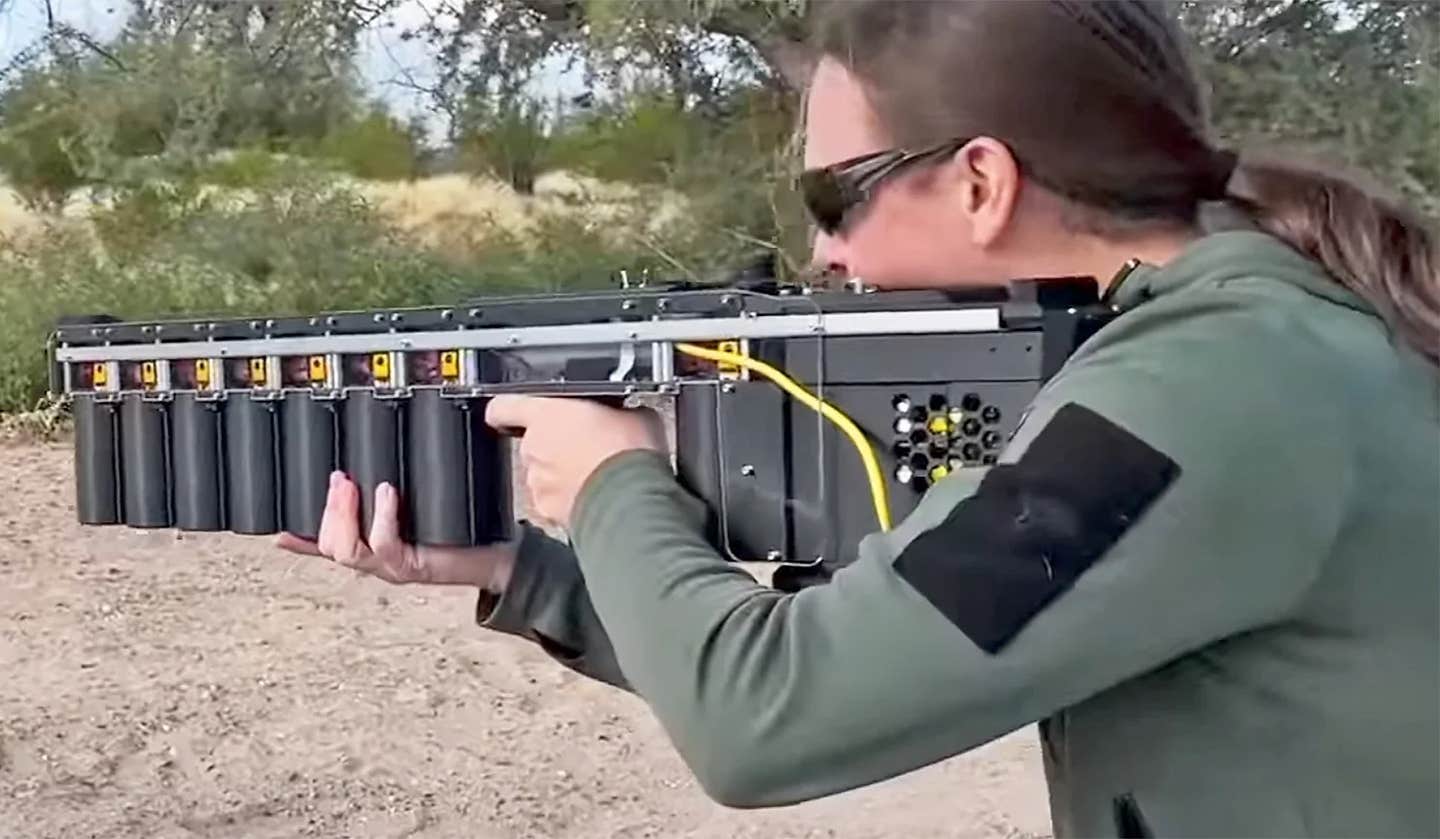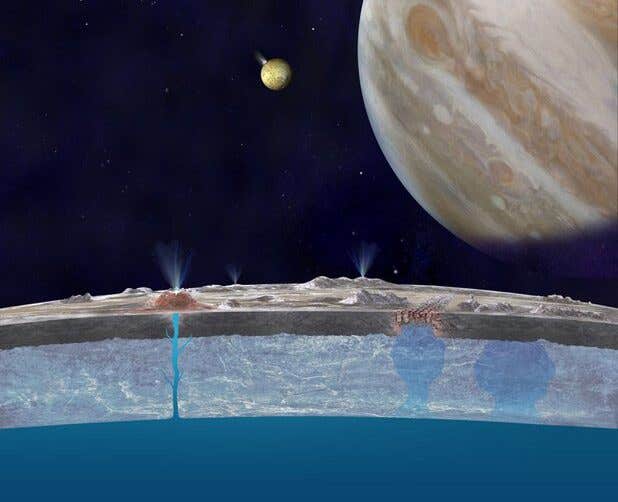Introducing the world’s first non-lethal handheld electric rail gun for sale
Arcflash Labs introduces the GR-1 Anvil Gauss rifle, a handheld coilgun that redefines weapon technology with adjustable power and non-lethal capabilities.

Holding the Arcflash GR-1 Anvil. (CREDIT: Arcflash Labs)
Arcflash Labs, LLC is marketing a new weapon that might just revolutionize modern weaponry. It's called the GR-1 Anvil Gauss rifle, a device they claim to be the "world's first and only handheld Gauss rifle." Despite the U.S. Navy abandoning its railgun program, this rifle stands out as a promising innovation.
It’s available for order at a price of $4,000 and uses powerful magnets to launch metal projectiles, catching the attention of both law enforcement and military agencies. Yet, safety and performance concerns linger, which even the company's CEO acknowledges.
The GR-1 Anvil Gauss rifle was developed by David Wirth and Jason Murray, aerospace engineers with experience as U.S. Air Force officers. Together, they have over 20 years of expertise in pulsed power supply development. Their backgrounds have helped shape the creation of this unique device, setting a new standard in coilgun technology.
The weapon can launch ferromagnetic projectiles less than half an inch in diameter at speeds exceeding 200 feet per second, with an output of up to 100 joules, equivalent to 75 foot-pounds of force. This energy level is comparable to some .22 caliber rifles, making it one of the most powerful handheld coilguns publicly available, according to the company.
Coilguns, or Gauss rifles, work by creating a magnetic field through electrified coils, propelling ferromagnetic objects at high speeds. This principle differs from railguns, which use electric currents flowing between conducting rails. Handheld coilgun concepts have been around for a while, but most haven't demonstrated enough power for practical use in military or security contexts.
The GR-1 Anvil Gauss rifle is quite a hefty piece of equipment, measuring 38 inches long with a 26-inch barrel, and weighing around 20 pounds. It operates using a 25.2-volt lithium-ion polymer battery, which powers its sophisticated firing system. Images on the company’s website show a design that combines 3D-printed components for the stock and some acrylic plastic sections.
Arcflash Labs designed the GR-1 with an advanced charging system that includes a "dual Clamped Quasi-Resonant Inverter," allowing for a firing rate of up to 20 rounds per minute at full power, or 100 rounds per minute at half power. The trigger has an innovative feature that lets you lightly press it to pre-charge the system, readying it for a full-power shot. This charging flexibility adds a layer of user control uncommon in similar weapons.
Related Stories
The rifle uses a unique kind of ammunition, relying on magnetic acceleration rather than explosive propellants. This means it can fire any iron-rich projectile within specific dimensions—between 11 to 12.6 millimeters in diameter and 30 to 52 millimeters in length. This flexibility in projectile choice highlights the adaptability of the GR-1, giving it potential applications beyond lethal force.
Reports emphasize that the Anvil can generate a muzzle energy of about 85 joules, similar to a high-end air rifle and about half the power of a .22 caliber firearm. This level of force places it in an interesting category—effective but not excessively lethal, potentially making it useful for non-lethal applications.
According to co-founder David Wirth, much of the interest surrounding the GR-1 centers on its potential to fire non-lethal projectiles, such as rubber bullets or pepper spray-filled rounds. Because the rifle uses electromagnetic propulsion, these types of ammunition would need ferromagnetic components, like sabots or iron shavings, to be properly launched. This versatility makes the GR-1 an appealing option for law enforcement or crowd control scenarios.
Wirth points out that one major advantage of coilgun technology over traditional CO2-powered weapons is its ability to adjust power on the fly. Users can decrease the power to avoid causing injury when a target is close or increase it for targets further away. This adaptability is a key selling point, especially for scenarios requiring non-lethal measures.
The technology behind coilguns could represent the next significant shift in weaponry, and Wirth believes the use of gunpowder—a technology that’s more than a thousand years old—will eventually be phased out. He foresees electromagnetic weapons becoming mainstream as production costs decrease and the technology becomes lighter.
Still, Wirth is candid about the current state of coilguns, acknowledging that they are in the early stages of development and not yet widely ready for combat deployment.
A critical innovation behind Arcflash's GR-1 involves the rifle's efficient capacitor charging and power supply system. This complex engineering is what allows the rifle to maintain a practical rate of fire while still generating the kind of kinetic force that puts it on par with traditional firearms.
Compared to most coilguns demonstrated before, which often lacked sufficient energy or consistent power, the GR-1 appears to push those boundaries, making the concept more feasible for security and military applications.
At 20 pounds, the GR-1 Anvil is not lightweight by any means, but given the technical components required to generate the magnetic force for launching projectiles, the weight is somewhat justified. It’s certainly heavier than conventional firearms of similar size but still manageable in the field by trained personnel. Its construction, including 3D-printed and acrylic elements, also reflects the experimentation that comes with such emerging technologies.
What really sets the GR-1 apart is its power regulation. While traditional firearms have set calibers and energy outputs, coilguns like the Anvil can modify power levels almost instantly. This is particularly useful for scenarios where the operator might need to change their tactics in real time, such as adjusting from crowd control to a more precise application of force without needing to switch weapons or ammunition types.
Wirth and his team recognize the challenges ahead. Despite the significant achievements with the GR-1, mass adoption of coilguns will require significant improvements in energy efficiency, weight reduction, and cost-effectiveness. The goal is to make these weapons not only competitive with but preferable to traditional firearms.
In the near future, you might see weapons like the GR-1 becoming more commonplace as advancements in battery technology and materials science help mitigate current limitations.
While the technology isn’t quite ready to replace all uses of gunpowder-based weapons, it marks a critical step toward a new age of military and law enforcement equipment, where the emphasis might be on adjustability and minimizing collateral damage.
Note: Materials provided above by The Brighter Side of News. Content may be edited for style and length.
Like these kind of feel good stories? Get The Brighter Side of News' newsletter.



